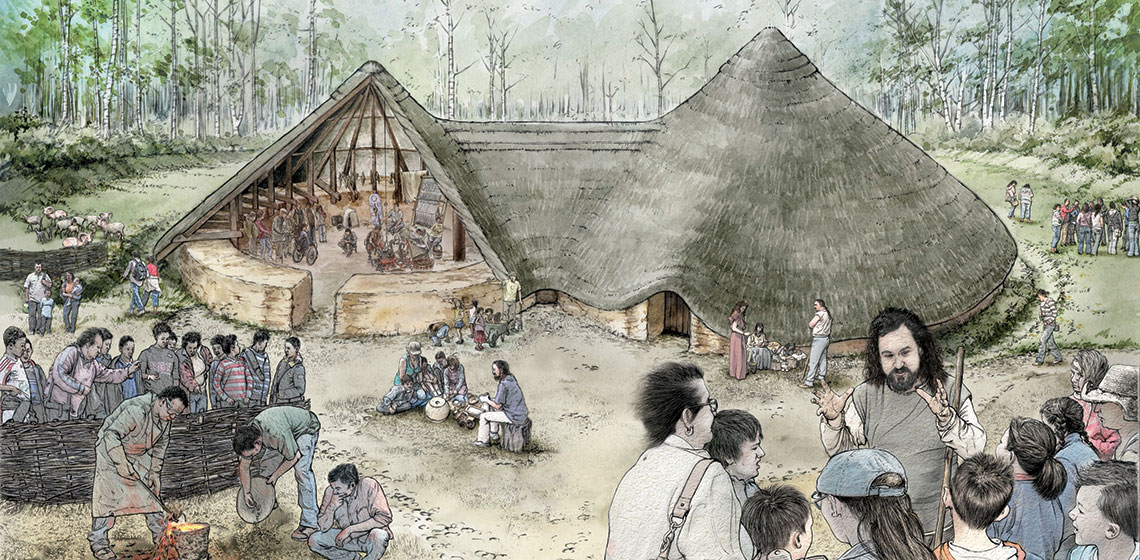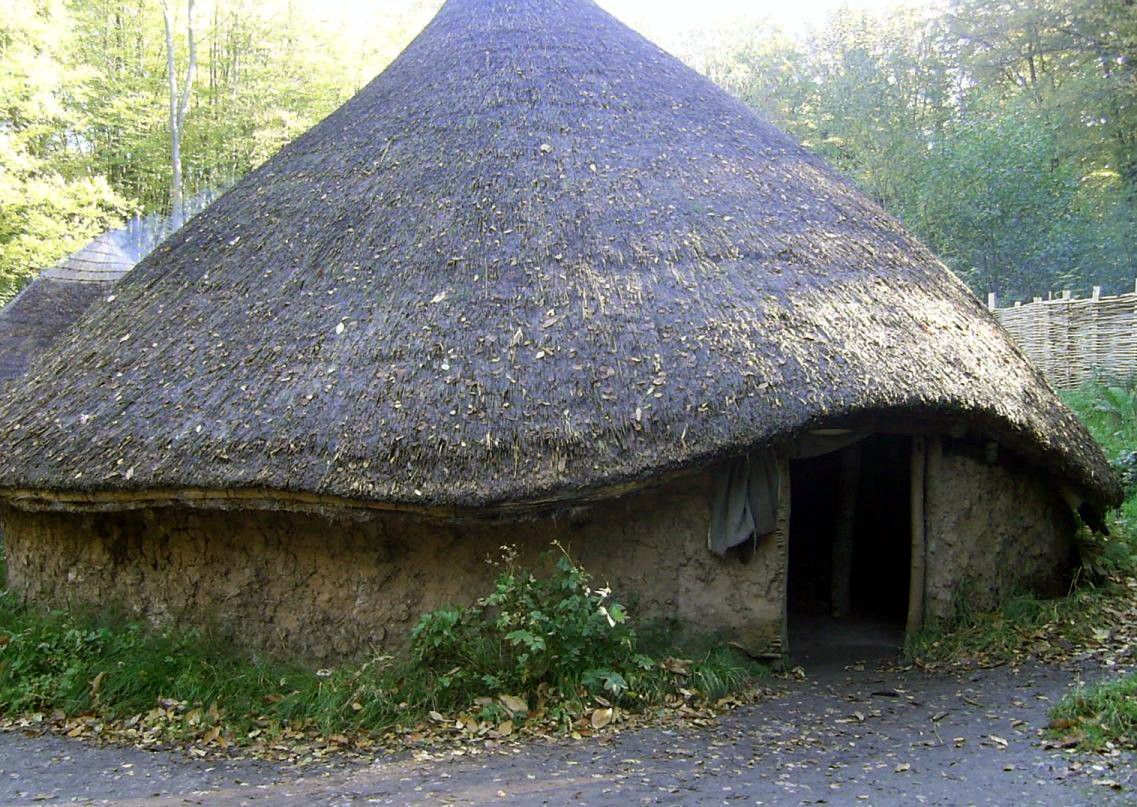Antwort Who lived in roundhouses? Weitere Antworten – What is the history of roundhouses in Celtic
Roundhouses were the standard form of housing built in Britain and Ireland from the Bronze Age throughout the Iron Age, and in some areas well into the Sub Roman period. The people built walls made of either stone or of wooden posts joined by wattle-and-daub panels, and topped with a conical thatched roof.The Celtic tribes lived in villages. They lived in round houses with thatched roofs of straw or heather. In the South, walls of their houses were made from local material. Houses in the south tended to be made from wattle (woven wood) and daub (straw and mud) as there was lots of wood available from the forests.They fell out of use in South-West Britain in the 8th Century. Wales may have had them potentially for longer. Rectangular houses become popular among Irish elite 900 – 1000 CE.
Where did the Iron Age Celts live : Early sources place Celts in western Europe and also occupying land near the headwaters of the Danube River. Their home territories have often been traced to central and eastern France, extending across southern Germany and into the Czech Republic.
How many people lived in a roundhouse
Some were only a few metres in diameter and might have housed a nuclear family (parents and their children). But others could be very substantial. Some roundhouses from the early phases of Broxmouth hillfort in East Lothian, for example, have been estimated to have housed more than 30 people.
What is the history of roundhouses : During the Bronze and Iron Ages in Britain, roundhouses were the most common form of home. These roundhouses are reconstructions based on the archaeology of the original houses, which were excavated by the Gwynedd Archaeological Trust between 1985 and 1987. The excavations revealed three substantial roundhouses.
House according to trains magazine. There were once three thousand of these buildings across north america.
Rectangular buildings replace the roundhouse eventually because of construction materials and, possibly, because of the Roman influence; the arrival of concrete, the arch and the rectilinear layout.
Who lived in the Iron Age
Celts
Life in Iron Age Europe was primarily rural and agricultural. Iron tools made farming easier. Celts lived across most of Europe during the Iron Age. The Celts were a collection of tribes with origins in central Europe.Celtic cultures seem to have been diverse, with the use of a Celtic language being the main thing they had in common. Today, the term 'Celtic' generally refers to the languages and cultures of Ireland, Scotland, Wales, Cornwall, the Isle of Man, and Brittany; also called the Celtic nations.Iconic London venue the Roundhouse was originally built in the mid-19th century as the Great Circular Engine House. It was designed by Robert B. Dockray and Robert Stephenson for the London and Birmingham Railway, for the purpose of turning around steam engines within London's tight urban grain.
The roundhouses on these large railroads served as relay points where a new locomotive (and crew) took over the train while the previous locomotive went in for maintenance. Railroads embraced the circular roundhouse design for a variety of reasons.
Did the Romans have roundhouses : Even after the Romans arrived many people on rural sites, especially in remote areas, continued to live in roundhouses. By the end of the Roman period around 400AD most people lived in square or rectangular, Roman style buildings, although after the Romans left many traditional styles of life became common again.
Did Vikings live in the Iron Age : Periodization. The Iron Age in Scandinavia and Northern Europe begins around 500 BC with the Jastorf culture, and is taken to last until c. 800 AD and the beginning Viking Age. It succeeds the Nordic Bronze Age with the introduction of ferrous metallurgy by contact with the Hallstatt D/La Tène cultures.
Are we still living in the Iron Age
Some historians argue that the Iron Age never ended and that we are still living in it today. This was most likely because steel was still widely used, particularly during the Industrial Revolution in the early twentieth century and even today.
Ireland. The Irish make up by far the biggest proportion of overseas Celts. Up to 10 million people are estimated to have emigrated from Ireland and more than 70 million people around the world claim Irish descent – around 11x the current population of the island of Ireland.They are the Sidhe (pronounced “shee”) – mystical fairy-like people who supposedly inhabited Ireland prior to the arrival of the Celts (the Milesians). The Tuatha de Dannan are credited with naming Ireland.
Who lived in Scandinavia before the Vikings : The Maglemosian culture lived in Denmark and southern Sweden. To the north, in Norway and most of southern Sweden, lived the Fosna-Hensbacka culture, who lived mostly along the edge of the forest.








